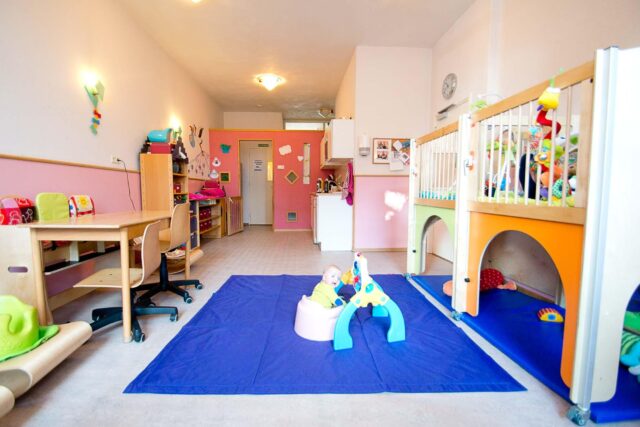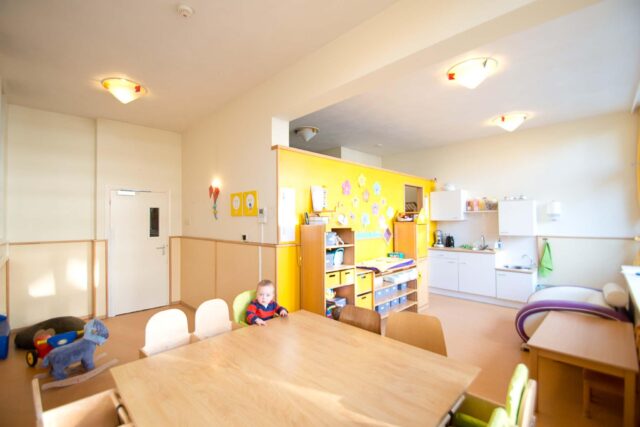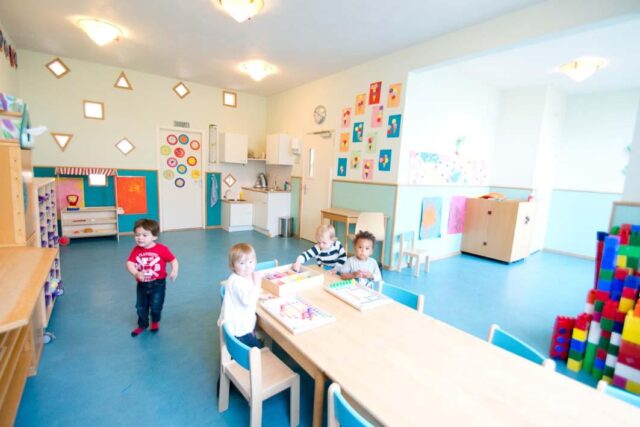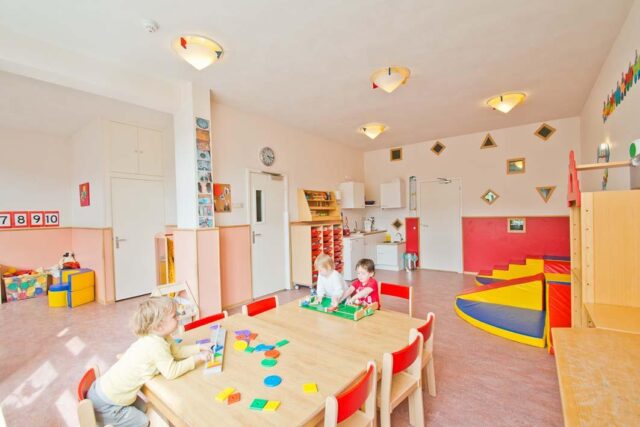Pink Group (3 months–1 year)
The pink group is centred around rest, warmth, safety and security. This climate stimulates the development of a baby and the use of toys with different forms, colours and materials stimulates the development even further. The babies spent the greater part of the day on a baby garment, on which they can move freely.
The day rhythm from home will be followed in the baby group. We offer care for babies from the age of minimal 12 weeks. The reason for that is that a baby younger then 12 weeks is has not develop its own safety and stability and therefore can be in a vulnerable position within the group. Villa Valentijn Den Haag offers the opportunity of breastfeeding for mothers, who would like to take advantage of it.

Yellow group (1-2 years)
In the yellow group the day rhythm will change due to how much sleep the children need and a transition in their diet. The development the child goes through up to the age of 1,5, is connected with the development the child went through in the toddler group.
The basis for social interaction with other toddlers is of great importance in the turquoise group. The basis is laid for playing together, making friends and sharing. The motoric development makes great progress in this stage. From belly sliders to crawling and from standing to walking. The language comprehension is also increasing in this stage, the babbling. The development is stimulated through toys, moving freely through the whole room and outside activities.

Turquoise Group (2-3 years)
The turquoise group is between the mini and maxi toddler group, in concern to development. Emphasis is mainly on fantasy games that are based on truths, such as puppetry, father/mother games and playing with tableware etc. Construction materials, such as Duplo, is also often used for playing. Puzzling is also practiced in this group. The maxi-toddler group is a group, in which social interaction and language development is one of the main concerns. Children are encouraged to play together and to let their fantasies run free. Use is made of toys, group discussions and reading stories. The children are allowed to play freely but attention is also paid to specific activities, such as creative drawing and music.

Red Group (3-4 years)
The Red group is a group in which social interaction and language development are central. Children are encouraged to play together and their imagination free rein to go. Use is made of custom toys, group discussions, themes and stories to read. The children have the option of free play, but it is during the day is also spent on specific activities such as creative drawings and music. More independence is expected from the children, in regards to cleaning up, going to the toilet, getting dressed etc. In this group, sleeping is slowly getting less because children from 4 years don’t have to sleep. This way children get slowly prepared for primary school.

A maximum of two permanent pedagogical employees for 0-year-olds
Two permanent pedagogical staff members are assigned to each child. At least one of these two pedagogical staff members is always working on the days that the child comes. If the size of the core group requires the deployment of more than two pedagogical staff members, a maximum of three permanent pedagogical staff members may be assigned to the child. In addition to the ‘permanent face’, other pedagogical staff can be deployed. The ‘fixed faces requirement’ does not apply to children with flexible days. In the elaboration, you can choose to deploy two pedagogical employees in a group with 0-year-olds (horizontally or vertically) who together occupy the five weekdays throughout the week (e.g. one works three days and the other works the other two days). ).
We have chosen to associate two pedagogical staff members as ‘permanent faces’ with each baby.
